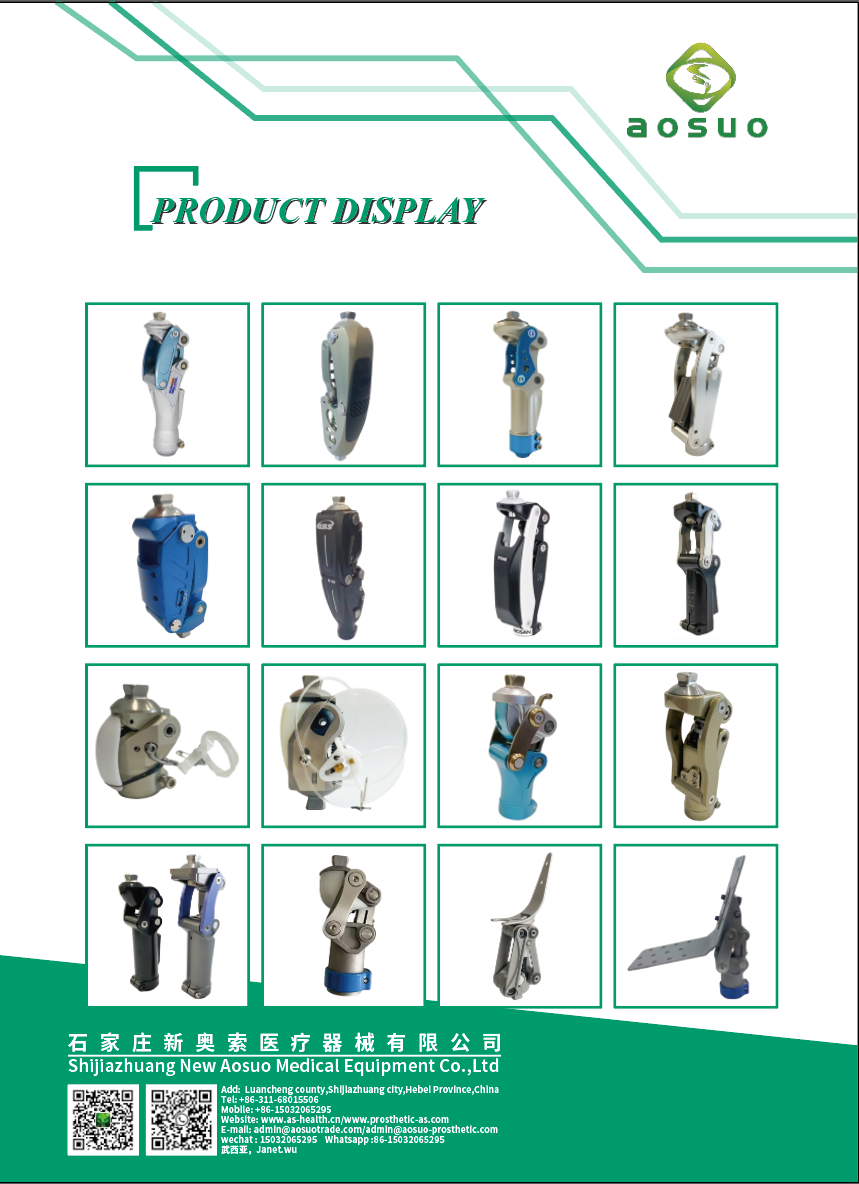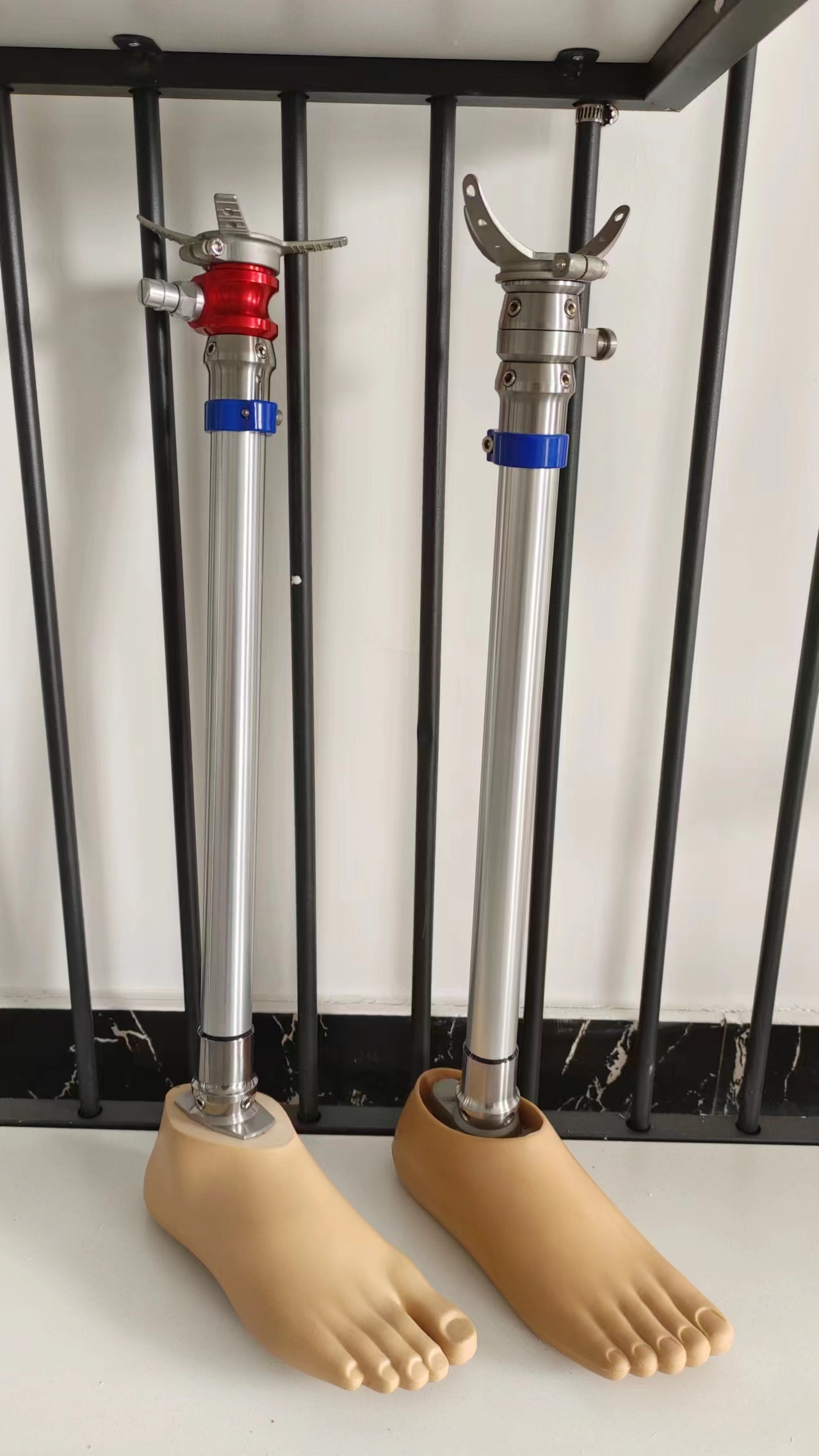How a Prosthetic Ankle Joint Can Improve Mobility: A Comprehensive Guide
Release Time:
May 11,2025
How a Prosthetic Ankle Joint Can Improve Mobility Understanding Prosthetic Ankle Joints Prosthetic ankle joints play a pivotal role in restoring mobility and independence to individuals who have undergone leg amputations. Whether due to trauma, disease, or congenital conditions, the loss of a limb can significantly affect a person’s quality of life. **Prosthetic ankle joints are designed to mimic
How a Prosthetic Ankle Joint Can Improve Mobility
Understanding Prosthetic Ankle Joints
Prosthetic ankle joints play a pivotal role in restoring mobility and independence to individuals who have undergone leg amputations. Whether due to trauma, disease, or congenital conditions, the loss of a limb can significantly affect a person’s quality of life. **Prosthetic ankle joints are designed to mimic the natural function of the ankle, enabling users to walk, run, and engage in everyday activities with greater ease.**
The Importance of Mobility in Daily Life
Mobility is essential for maintaining a high quality of life. It allows individuals to perform daily tasks, engage in social activities, and maintain physical fitness. **For amputees, the ability to move freely can be a powerful factor in emotional well-being.** The restoration of mobility through prosthetic technology opens doors to new opportunities, fostering independence and confidence.
Benefits of Using a Prosthetic Ankle Joint
Prosthetic ankle joints offer numerous benefits that significantly enhance mobility and overall quality of life:
1. Enhanced Functionality
Modern prosthetic ankle joints are equipped with advanced technology that allows for improved functionality. These devices can adjust to different surfaces and walking speeds, providing a more natural gait. **With features like hydraulic or microprocessor-controlled components, users can navigate various terrains with ease.**
2. Improved Comfort
Comfort is paramount in prosthetic design. Many contemporary prosthetic ankle joints come with adjustable settings to cater to individual needs. **The materials used are often lightweight and breathable, reducing discomfort during prolonged wear.** This consideration allows users to focus on mobility rather than irritation from the device.
3. Increased Stability
Stability is crucial for preventing falls and injuries. Prosthetic ankle joints are designed with a focus on balance, which is essential for those adjusting to life with a prosthetic limb. **Many devices incorporate features that provide additional support, particularly on uneven surfaces or during physical activities.**
4. Encouragement of Physical Activity
Having access to a reliable and functional prosthetic ankle joint encourages individuals to engage in physical activities. **Whether it’s walking, running, or participating in sports, the right prosthesis can inspire users to step outside and enjoy life more fully.** Regular physical activity is essential for maintaining health, weight management, and mental well-being.
5. Psychological Benefits
The psychological impact of regaining mobility cannot be overstated. **Prosthetic ankle joints can lead to increased self-esteem, a sense of normalcy, and improved mental health.** Users often experience a significant boost in confidence, allowing them to participate in activities they may have avoided prior to receiving their prosthetic.
Types of Prosthetic Ankle Joints
Understanding the different types of prosthetic ankle joints available can help users make informed decisions about their mobility options.
1. Non-Articulated Ankle Joints
Non-articulated joints are simpler devices that provide basic support without the complexity of moving parts. **These are often more affordable and suitable for users who need a simple solution for mobility.** However, they may not offer the same level of functionality as articulated joints.
2. Articulated Ankle Joints
Articulated ankle joints allow for movement similar to a natural ankle. **These devices often feature a hinge mechanism that enables dorsiflexion and plantarflexion, improving the user’s walking experience.** They provide greater versatility and adaptability to different walking conditions.
3. Microprocessor-Controlled Ankle Joints
Microprocessor-controlled ankle joints represent the forefront of prosthetic technology. **These advanced devices utilize sensors and algorithms to adjust the ankle position in real-time based on the user’s movements and environment.** They offer unparalleled functionality, allowing users to navigate complex terrains seamlessly.
4. Hydraulic Ankle Joints
Hydraulic ankle joints use fluid to control movement, providing a smooth and consistent performance. **These joints can absorb shock and adjust to changes in ground surfaces, enhancing comfort and stability.** Users often report a more natural walking experience with hydraulic systems.
Choosing the Right Prosthetic Ankle Joint
Selecting the appropriate prosthetic ankle joint involves several considerations that can influence mobility outcomes.
1. Assessing Activity Level
An individual’s lifestyle and activity level are crucial factors in choosing the right prosthetic ankle joint. **Active individuals may benefit from more advanced, articulated options, while those with a more sedentary lifestyle might opt for simpler designs.**
2. Consulting with Professionals
Working with a team of healthcare professionals, including prosthetists, physical therapists, and rehabilitation specialists, is essential. **These experts can provide personalized recommendations based on the user’s specific needs and mobility goals.**
3. Trial and Fit Testing
Before committing to a prosthetic ankle joint, it’s important to trial various options. **Fit testing allows users to experience how different joints feel during walking or other activities, ensuring the best choice for comfort and functionality.**
Technological Advancements in Prosthetic Ankle Joints
The field of prosthetics is continually evolving, with new technologies enhancing the functionality and comfort of prosthetic ankle joints.
1. Smart Prosthetics
The integration of smart technology into prosthetic designs has revolutionized mobility solutions. **Smart prosthetics can collect data on user activity, providing insights into performance and allowing for tailored adjustments.** This level of customization helps enhance overall user experience.
2. 3D Printing Technology
3D printing has emerged as a game-changer in prosthetic design and manufacturing. **This technology enables the creation of custom-fit prosthetic joints that meet the unique anatomical requirements of each user, leading to improved comfort and function.**
3. Biomechanical Research
Ongoing biomechanical research is crucial for developing more effective prosthetic joints. **Studies focused on gait analysis and movement mechanics are helping engineers design devices that better replicate natural movement patterns, thereby improving overall mobility.**
Real-Life Success Stories
Hearing from individuals who have successfully integrated prosthetic ankle joints into their lives can provide inspiration and encouragement.
1. John’s Journey: From Amputation to Marathon
After losing his leg to diabetes, John was uncertain about his future. With the help of a microprocessor-controlled ankle joint, he not only regained his mobility but also trained for and completed a marathon. **His story exemplifies the potential of prosthetic technology to transform lives.**
2. Emily’s Experience: Overcoming Challenges
Emily, a passionate dancer, feared her amputation would end her career. However, with the right articulated ankle joint, she not only returned to dance but also performed on stage again. **Her story highlights the importance of choosing the right prosthesis for personal passions and hobbies.**
Frequently Asked Questions (FAQs)
1. What is a prosthetic ankle joint?
A prosthetic ankle joint is an artificial device designed to replace a missing or non-functional ankle, allowing individuals to walk and engage in physical activities.
2. How does a prosthetic ankle joint improve mobility?
It enhances mobility by mimicking the natural movement of an ankle joint, allowing for improved gait, balance, and stability during walking or running.
3. Are there different types of prosthetic ankle joints?
Yes, there are various types, including non-articulated, articulated, microprocessor-controlled, and hydraulic ankle joints, each offering different levels of functionality.
4. How do I choose the right prosthetic ankle joint?
Consider your activity level, consult with healthcare professionals, and trial different options to find the best fit for your mobility needs.
5. What are the benefits of microprocessor-controlled prosthetic ankle joints?
Microprocessor-controlled joints adjust to real-time movements, providing enhanced functionality, comfort, and adaptability to various terrains.
Conclusion
Prosthetic ankle joints have significantly transformed the lives of many individuals by enhancing mobility and independence. With advancements in technology, the future of prosthetics looks promising, offering solutions that cater to the diverse needs of users. By understanding the types of prosthetic ankle joints available and the benefits they provide, individuals can make informed choices that will lead to a more active and fulfilling life. Embracing these innovations not only restores physical capabilities but also empowers individuals to overcome challenges and reclaim their passions.
Keywords:
You Can Also Learn More About Industry Trends







